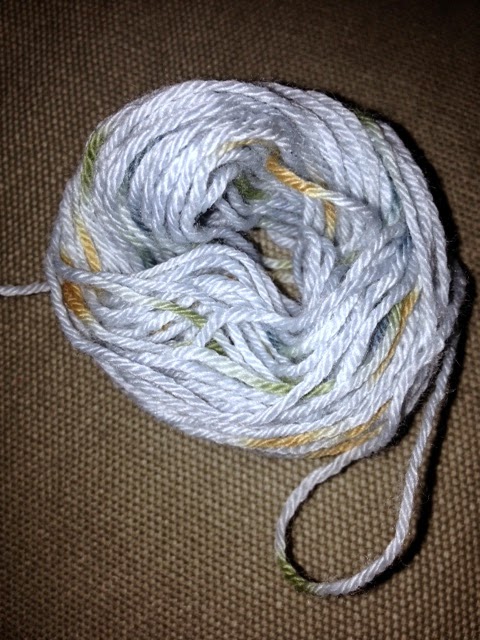TSCArtyarns Zara Hand-Dyed
I mentioned before that I really don't
like to have a large yarn stash, but I was the grand prize winner and
an individual store winner of the Triangle Yarn Crawl, which made my
stash grow considerably. I only made one purchase during the yarn
crawl and that was for a gorgeous yarn that I had to buy even though
I did not have a project in mind. I purchased this yarn only for the
colors. I didn't know the fiber content or the yarn's weight. I
didn't even pay attention to the brand.
I used mostly acrylic yarn that I
purchased from chain craft stores before I did the yarn crawl. I have
since broadened my horizons and fallen in love with wool and wool
blends. One of the brands that I haven't purchased yet, but hope to
get my hands on, is Artarns. I really like their line of shiny beaded
and sequined yarn. But, that's for some time in the future.
I'm wrapping up several projects and
decided to check out this anonymous yarn that I purchased during the
yarn craw. It looked even more beautiful than I remembered and my
brain lit up with design ideas. I pulled the label from the center of
the ball and discovered it was TSCArtyarns Zara
Hand-Dyed, which is a joining of Tahki Stay Charles and
Artyarns. It turned out this whole time I had been window shopping
Artyarns, I already had some in my stash.
I was slightly disappointed that I
marked this yarn to make a gift for my mom. But, I enjoy working with
fine yarns even if the product will be given away. I investigated the
label and saw that it was “100% Extrafine Merino Wool”. I
haven't knit with luxurious merino yet and it will be nice to compare
some regular ol' merino that I have with this “extrafine.” I
still don't know exactly what I will make with this yarn, but it has
motivated me to finish up my projects.
I haven't posted for a while since I
have been obsessively spinning yarn and doing very little knitting. I
have been working on a post explaining how I do gauge swatches. I
will also have some spinning posts coming up soon.
Have you been lucky enough to find gems
in your yarn stash that you didn't realize were there?


















